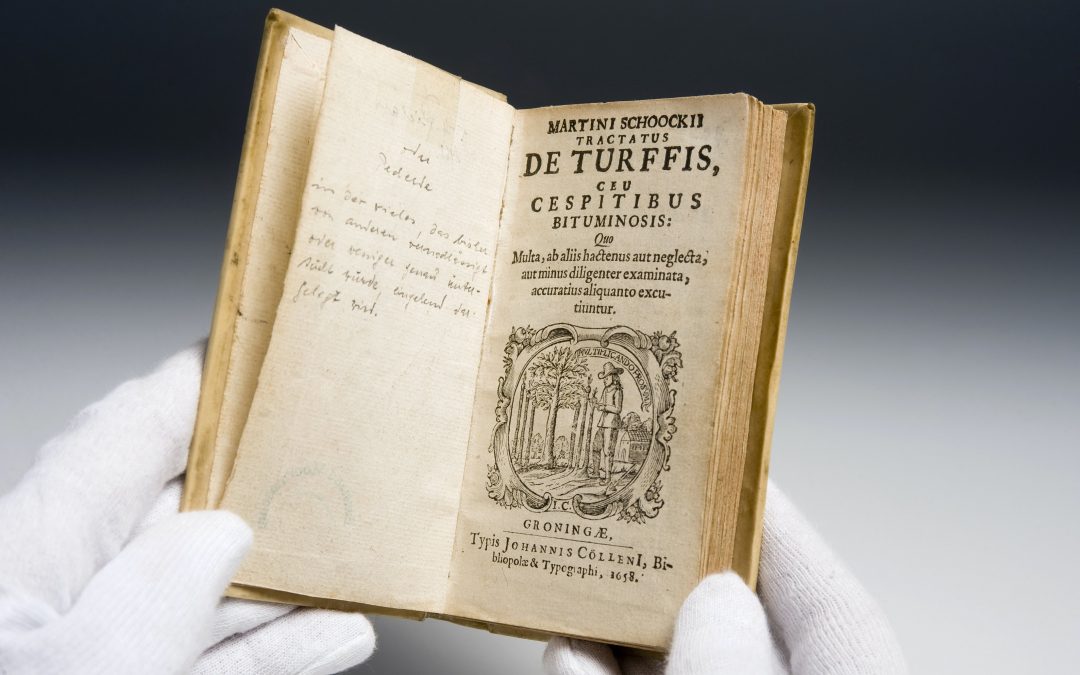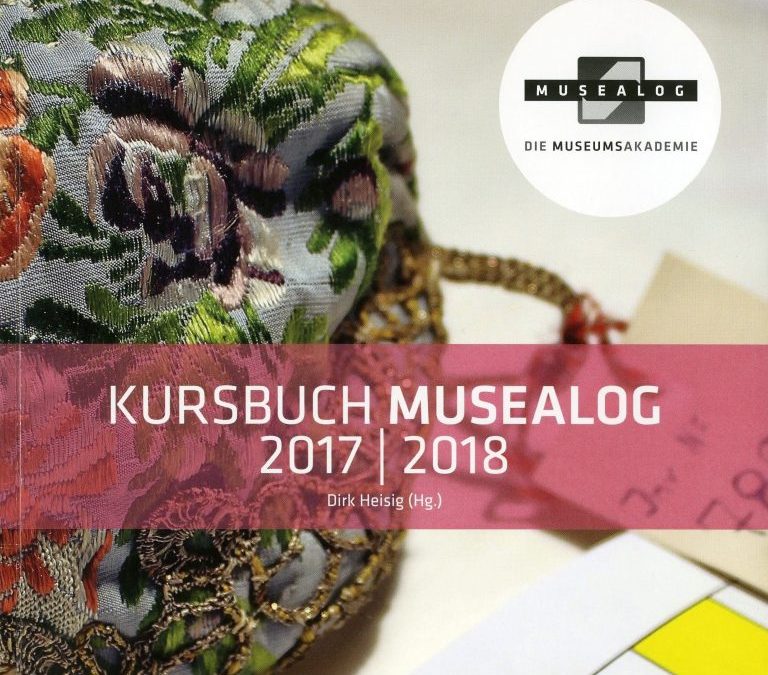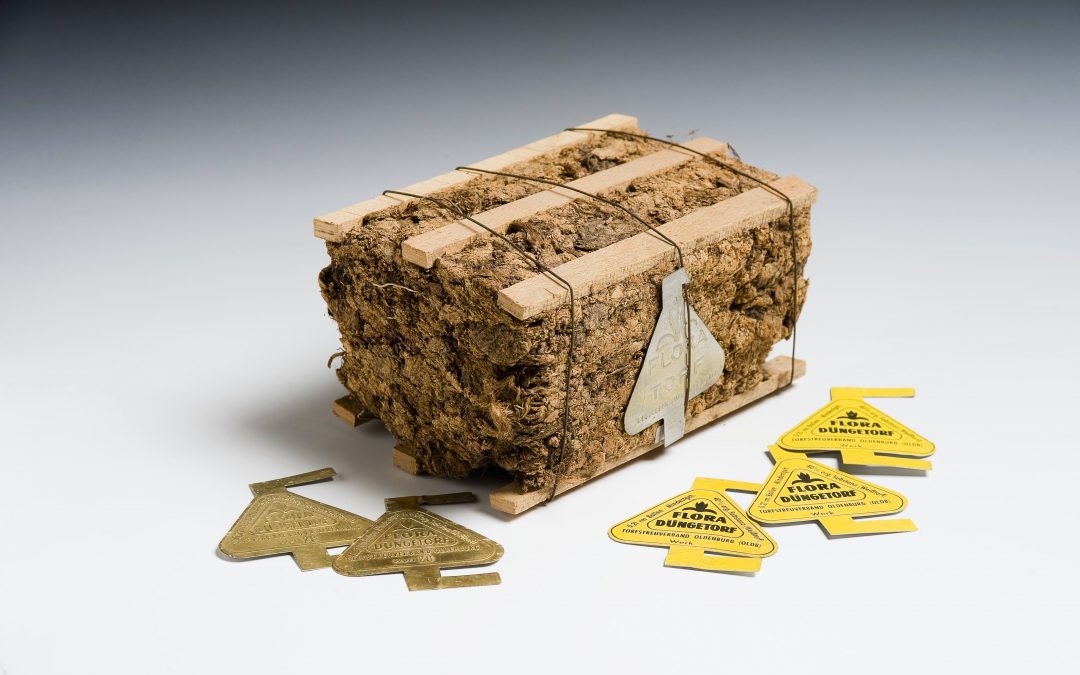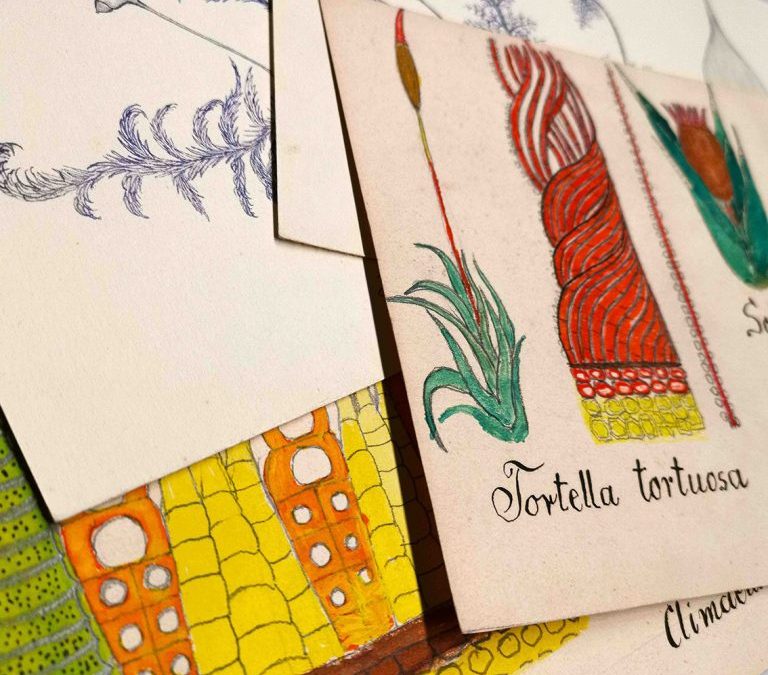
Collection and preservation
You will find the library, image archive and graphics collection on the upper floor of the entrance hall. The scientific library contains written material on the subject of peatlands, turf and settlement history. The museum collects interdisciplinary and supra-regional historical, geographical, natural history and technical documents, images, drawings including technical drawings, and graphics on the above topics. The museum also owns some important former private collections. One notable example is that of the Oldenburg engineer Richard, which includes literature, photography and drawings on the subject of peat cutting technology, and contains rare documents spanning centuries. In terms of cohesion and scope, the library and archive holdings are unique in Germany. Use: The holdings of Emsland Moormuseum are being recorded using LIDOS and Augias Museum within the framework of several projects. Once parts of the collection that belong together in terms of content have been recorded in their entirety, they will be made available for online research. Insofar as possible, the collection can already be used for scientific research purposes. Please book in advance.
In-house contact: Ansgar Becker, Tel: +49 (0)5937 7099912
Fig.: The oldest printed work on the subject of peat extraction was published in Groningen in 1658. The book is written in Latin and bears the title “de Turffis”.

Collection and preservation
MUSEALOG (www.musealog.de) is an advanced training programme aimed at art historians, historians, folklorists and cultural scientists, and offers museum-specific further training in the methods of scientific object documentation using IT and general museum and cultural management.
MUSEALOG has been training prospective museum employees since May 1997 and stands for a cooperative and dialogue-based collaboration between participating museums. During the project at Emsland Moormuseum, participants are involved in the recording and documentation of objects in the collection. At the same time, they are introduced to collection documentation and management, and can participate in small-scale projects.
Emsland Moormuseum provides one to two training places within the framework of MUSEALOG. If interested, you can contact the MUSEALOG office, where you will also find the date of the next MUSEALOG edition, or speak to Mr Ansgar Becker at the museum.

Collection and preservation
Collection concept
The collection concept of Emsland Moormuseum follows the guidelines of the decentralised museum concept of the district of Emsland with regard to the focus of its collection, in line with the thematic and content-related orientation of all the other museums in the Emsland district. In addition, the museum engages in specialist exchange with regional and national museums. With regard to archival records, coordination takes place with the regional archives (Lower Saxony State Archive Osnabrück, Drenthe Archives, Assen (NL) and Kreisarchiv (district archives) Meppen). Supra-regional exchange with other cultural institutions that research and collect within the subject area is permanently provided for through Section 7, Regional Studies and Environmental Education, within the German Peat Society (DGMT).
In accordance with our mission as a museum, the collection objects are catalogued, stored professionally and appropriately, and restored if necessary. All the way from traction engines to peat soap, the collection currently comprises around 18,500 objects, some of which have yet to be catalogued.
Focal points of the Emsland Moormuseum collection
Thematically and geographically, the collection is structured as follows:
− Rural and settlement culture in the 17th and 18th centuries (Emsland)
− Settlement and cultivation in the pre-industrial period (northwestern Germany)
− Early peat extraction technology (Germany)
− General moorland and peat science (Germany/international)
− Rural and settlement culture in the 19th and 20th centuries, with the development of peat moorland in Emsland after 1945 (Emsland)
− Peat production and processing (focus on Germany, international)
− Technology of peat extraction and nature conservation (Germany)
− Economic significance of the peat moorlands. (Emsland/Germany/international)
− International organization and cooperation (international)
− Structural problems (international)
− Special topics: Balneology, urban hygiene, etc. (Germany)
In-house contact: Ansgar Becker, Tel: +49 (0)5937 7099912
Fig.: Miniature peat bales, promotional gift from the company Torfstreuverband, 1950

Collection and preservation
Dr. W. PH. Schimper: The book Versuch einer Entwicklungs-Geschichte der Torfmoose (Sphagnum) und einer Monographie der in Europa vorkommenden Arten dieser Gattung (An Attempt at a History of the Development of Sphagnum Mosses and a Monograph of the Species of this Genus Occurring in Europe), Stuttgart 1858, 96 pages with 27 copperplates.
Literature on peatland, which dates from the late 17th century, focused not only on the question of an efficient peat production method but also on the origins of the peatlands. There were various theories about this, but a conclusive scientific explanation with a broad consensus remained elusive. We now know that sphagnum, a genus of mosses, is characteristic of peat uplands and one of the most important peat-building plants. Due to the anatomic structure of their cells they act like a sponge. This enables them to absorb up to 30 times their dry weight in water, and then slowly release it back into the environment. These little plants grow steadily, while the part at the bottom dies off due to the absence of light and turns into peat. Peat moss therefore plays an indispensable role in the growth of peat uplands. A great deal of research over a long period of time led to the current state of scientific knowledge. It was only in the course of the 19th century, when botany began to develop as a branch of biology, that the plant cover of the peatlands could be adequately researched, bringing us to our present-day understanding.




